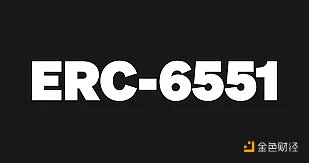The market “falls” endlessly, can the recent major changes in EOS reverse the overall situation?
Recently, there have been a lot of news about EOS in the market, such as a $24 million fine and a civil settlement with the US SEC. The V1.8 version has just been upgraded and announced the V2.0 version.
Today, the vernacular blockchain will work with everyone to sort out the things that have happened in the EOS ecosystem for some time.
01 Major breakthroughs in policy compliance
According to the SEC's official website, the US Securities and Exchange Commission (SEC) ruled that blockchain technology company Block.one behind EOS violated the federal securities laws registration requirements and required it to pay a $24 million fine for unregistered 1C0.
- Introduction to Asymmetric Encryption: Vernacular Analysis of Private Keys, Public Keys, RSA
- Love and mourning of the alliance chain: development is difficult, where is the source?
- Visit: What is behind the brush of the digital currency exchange?
Subsequently, Block.one issued a statement saying that it had reached a civil settlement with the US Securities and Exchange Commission (SEC) on September 30. According to the settlement agreement, Block.one will pay a one-time payment of $24 million in fines, while not admitting or denying the SEC. Survey results.
The statement also mentioned that the ERC-20 Token sold on the Ethereum blockchain is no longer in circulation or traded, no Token needs to be registered as a security, and the US SEC also grants Block.one a significant exemption for future business. Block.one believes that the SEC grants this exemption a proven commitment to Block.one's ongoing compliance and best practices in the US and around the world.

EOS technology is inseparable from policy support in order to achieve large-scale popularization. Block.one has been cautious in policy compliance, whether it is Block.one's CTO Daniel Larimer or CEO Brendan Blumer, has repeatedly mentioned that Block one will operate under the policy compliance framework, the upcoming social application Voice It will also be launched on the premise of doing a good job of compliance.
Recalling Block.one's B1June event in Washington in June and holding a lot of US Treasury bonds, it's hard to remember that it is paving the way for compliance.
Block.one's main development team is in the US, and the policy is like a sword hanging over Block.one's head. The civil settlement with the SEC was $24 million, and the sword finally fell. Not only did the SEC not pay attention to the EOS Token issue, EOS Token did not need to be registered as a security, and it was important to give Block.one a future business. The exemption, Block one will continue to conduct business, which clears the policy barriers for the large-scale application of EOS blockchain technology, which not only benefits the EOS ecosystem, but also benefits the entire blockchain industry.
Technology is a double-edged sword, blockchain technology is no exception, both advantages and disadvantages. On the one hand, the regulators must guard against the financial risks brought about by them, on the other hand, they cannot stifle innovation and need to find a balance between the two. This time a civil settlement with Block.one shows that the SEC is also exploring the path of scientific regulation, which is a positive signal for the entire blockchain industry.
02 New version upgrade, technology made a major breakthrough
On September 23, the largest version of the EOS update V1.8 was officially launched.
This upgrade is different from the past. Many new features are not activated immediately. Instead, BP needs to be activated one by one in the future. Even some features in the V1.8 version, if BP does not agree, can not be activated.
Yesterday, the EOSLaoMao team submitted three proposals for upgrading the EOS main network system contract (upgrading eosio, eosio.token and eosio.msig respectively), which has been successfully adopted and officially deployed on the EOS main network.
For the main content of the update in the EOSIO V1.8 version, we will briefly review the following.
1. It will be safer to use EOS DApp
For the DApp, the smart contract can determine which EOS accounts are sent to defend against malicious attacks; relax the permission restrictions required for the operation, ie minimize the permissions required for the operation; whether or not the original operation in the input transaction, all The operation will perform an authorization behavior consistency check.
For the user, by checking all the operating behaviors, it is guaranteed to have a certain resistance to malicious intentions that are not good.
2, EOS DApp project party can bear the user's EOS resource cost
The biggest update of EOSIO 1.8 is that it changes the payment method of EOS resources. DApp project party can choose to bear the cost of EOS resources of users, which will greatly reduce the threshold for users to use DApp and improve user experience. At the same time, this update is also ready for the launch of the social application Voice.
Of course, the new features in the EOSIO V1.8 version are not necessarily all online, because BP can selectively activate some functions on the line according to the actual situation.

Just as the new features in the EOSIO V1.8 release were gradually activated, yesterday, the EOSIO 2.0 candidate was released.
Block.one posted "EOSIO 2.0: Performance Optimization, Security Upgrades, and New Developer Tools" to introduce the main updates:
1. EOS VM: The WASM processing engine for the blockchain has a processing speed of up to 16 times.
2, EOSIO Quickstart Web IDE: lower the developer threshold, let new developers quickly get started with EOSIO development.
3, WebAuthn support: the security certification standard for transaction signatures can be completed without using other software or browser plug-ins.
4. Out-of-block multi-signature that supports weight thresholds: Enables BP to use multiple different private keys for block signing.
According to Block.one, after the version is launched, EOSIO performance will be greatly improved and transactions will become more secure.
03 A major turning point in chain governance
EOS chain governance, especially the EOS node ranking problem, has been the most concerned by the community and the outside world.
Among the current EOS super nodes, the nodes operated by the Chinese team account for more than two-thirds, and even the top standby nodes are mostly controlled by the Chinese team. Coupled with the phenomenon of alliance voting between nodes, the threshold of EOS super nodes is constantly being improved, and the gap between the head node and the standby node is getting larger and larger. Up to now, the number of votes for the 21st node is more than 270 million, and the number of votes for the 34th node is less than 100 million. The interest pattern between EOS nodes has been difficult to break.
In fact, both the geographical distribution of nodes and the type distribution of nodes (more nodes controlled by the trading platform) are too concentrated, and many of the creation nodes known for their technology and making great contributions to the EOSIO network have been squeezed. After 30, this is not conducive to the long-term stability of the EOS network. This may be one of the reasons why many foreign nodes are dissatisfied.

Objectively speaking, there is no ready-made success model for EOS chain governance. Everything is moving forward in the process of exploration. It is inevitable that there are problems of one kind or another. The community has been exploring different governance models.
Recently, there have been some subtle changes in the EOS node voting rankings.
1. Block.one issued a message suggesting that the time to participate in the main network voting has gradually matured.
CEO Brendan Blumer said on September 20th: “Block.one often said that they will not consider voting, unless they hold only a small amount of tokens in the main network. B1 now holds less EOS. The voting participation of the EOS main network has never been so high in 1/3 of the number of votes received by BP."

Block.one holds 100 million EOS votes in hand. If you participate in the main network voting, it will have a major impact on the current node structure.
In the community, they also hold different views on B1's participation in voting. Some agree with B1 to vote. They think that B1 can vote more objectively for those excellent nodes that really contribute to the community. Some people think that B1 holds heavy votes, maybe It will be contrary to the concept of decentralization.
As an important member of the EOS community, Block one will eventually participate in the EOS main network node voting. We still don't know, we can only expect Block.one to participate in the EOS main network voting at the right time and in the appropriate way. This has a positive impact on governance on the EOS chain.
2. Foreign EOS nodes begin to accept voting rebates
The behavior of EOS node voting rebates has always been a sensitive topic in the EOS community. Recently, some foreign EOS nodes have begun to change their minds, not only accepting voting rebates, but also have begun to take action to balance the Chinese EOS nodes with excessive concentration.
For example, the proxy voting account proxy4nation created by EOSCAfe and EOSNation has concentrated nearly 5 million EOS votes in just a few days, and the rewards for returning to voters are more and more rich, not only EOS rewards, but also REX rewards. Bouns Token rewards, USDT rewards, and a certain amount of EOS CPU resources, and rewards are issued daily.
3. More and more organizations are beginning to push the EOS main network to vote
EOS chain governance requires the efforts of all parties in the community, especially those that have influence in the community, and can use their own resources to boost the main network vote.
For example, the Equilibrium proxy voting system has successfully organized multiple community-wide voting. People with NUTs can choose five nodes they support. Equilibrium will eventually vote for the EOS votes for those who are the most in the community. node. Unlike other proxy voting accounts, Equilibrium only aggregates everyone's votes and supports the nodes with the most votes. It can't vote for the nodes. The voting process is decentralized.
EOS chain governance (including the main network voting) does have a lot of problems at present. After all, the main online line is only more than a year, and the effects of various measures have yet to be tested.
Message mining: In the article, I mentioned 100 million EOS in Block.one. Do you think you should participate in the EOS main network voting? why? Feel free to share your opinion in the message area.
——End——
Original: Iowa
『Declaration: This article is the author's independent point of view, does not represent the vernacular blockchain position, and does not constitute any investment advice or advice . You are not allowed to reprint this article by any third party without the authorization of the "Baihua Blockchain" sourced from this article. 』
We will continue to update Blocking; if you have any questions or suggestions, please contact us!
Was this article helpful?
93 out of 132 found this helpful
Related articles
- Interview with famous economist W. Brian Arthur: historic changes are taking place, blockchain will enter everyday life
- Viewpoint | Say goodbye to traffic and funds, is there still value in digital currency?
- How blockchain technology can improve the lives of 22 hospitals
- Viewpoint | If these three technologies improve, blockchain technology will be more widely used
- Explore: Blocking and expansion of blockchains
- Analysis: The DAO governance trend is gradually rising, and the blockchain needs no braking mechanism?
- The Bank of International Settlements economists propose a new method for financial market monitoring based on DLT






